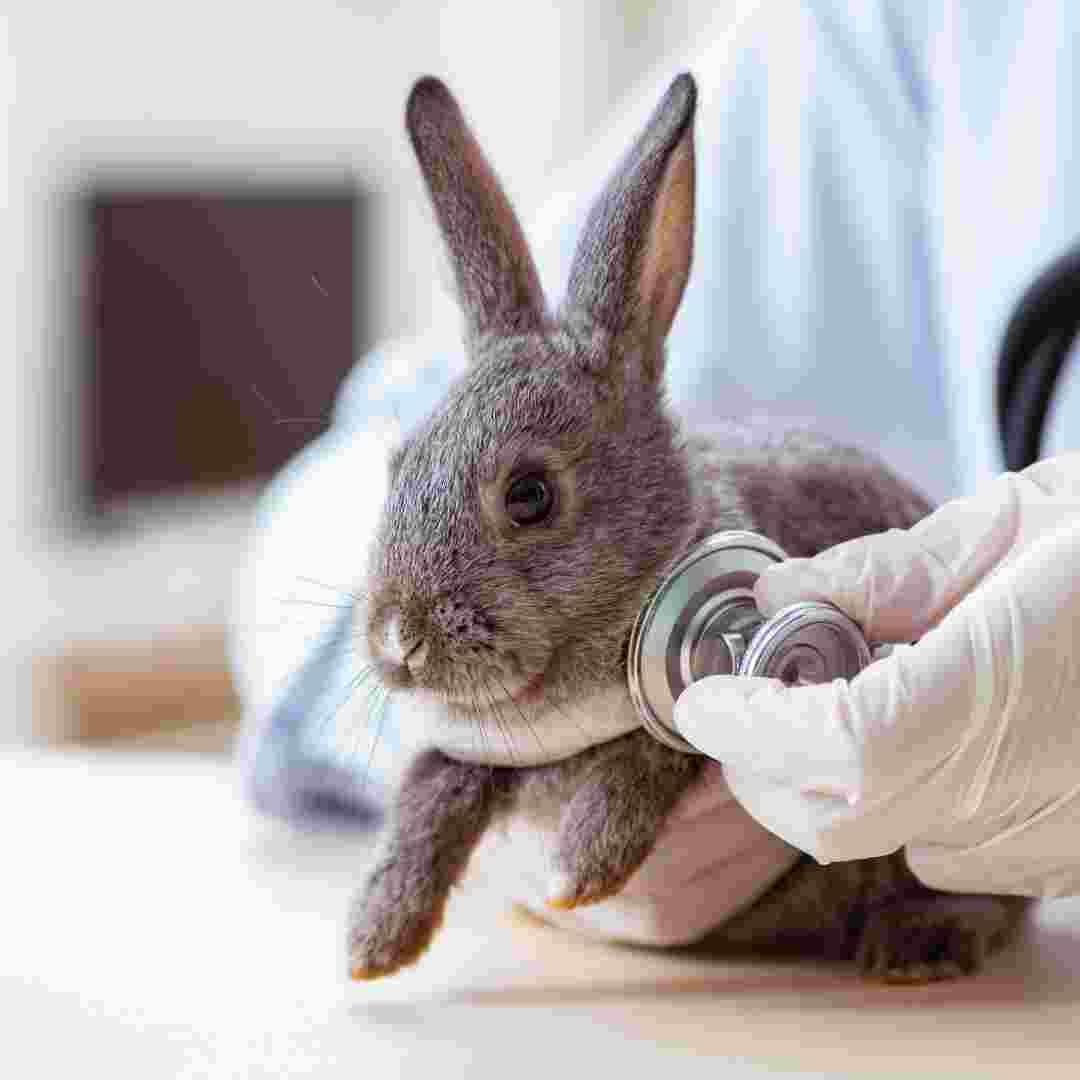Contents Table
Introduction
Rabbit Test History: How the First Pregnancy Test Changed the World
Rabbit test affects women's health and reproductive rights
Investigating Rabbit Test Ethics
The Rabbit Test: Its Mechanism and Measurements
What Replaced Rabbit Test and Why?
Q&A
Conclusion
Introduction
In the 1930s, Drs. Selmar Aschheim and Bernhard Zondek invented the rabbit test (Friedman Test) for pregnancy. The first successful pregnancy test was used until the 1970s. After injecting a female rabbit with a woman's urine, the ovaries were examined for growth. Growing ovaries indicated pregnancy. The test was supplanted by more reliable and less invasive home pregnancy tests. The rabbit test was abolished in the 1970s.
Rabbit Test History: How the First Pregnancy Test Changed the World
The Rabbit Test, the first pregnancy test, revolutionised medicine. The Rabbit Test, invented by Drs. Selmar Aschheim and Bernhard Zondek in 1927, was the first accurate pregnancy test. This test transformed pregnancy diagnosis and changed the lives of millions of women worldwide.
The Rabbit Test was based on the fact that pregnancy hormones changed female rabbit reproductive organs. Aschheim and Zondek injected pregnant women's urine into female rabbits and observed reproductive organ alterations. If rabbits' ovaries grew, the test was positive.
The Rabbit Test revolutionised medicine. Physical examination was the sole means to determine pregnancy before its growth. Misdiagnosis was common due to its unreliability. The Rabbit Test accurately detected pregnancy.
The Rabbit Test had downsides. It was costly and time-consuming since it used live rabbits. False positives and negatives were also possible with the test. Despite these shortcomings, the Rabbit Test advanced pregnancy diagnosis.
The Rabbit Test was supplanted by more accurate and dependable hCG assays. However, the Rabbit Test is still a medical milestone. The first reliable pregnancy test revolutionised the lives of many women worldwide.
Rabbit test affects women's health and reproductive rights
In the early 1950s, the rabbit test revolutionised women's health and reproductive rights. The rabbit test (also called the “Pregnancy Test”) was the first reliable pregnancy test. Before the rabbit test, women relied on physical indications and guesswork to detect pregnancy. The rabbit test gave women the certainty of pregnancy and empowered them to make reproductive health decisions.
The rabbit test greatly affected women's health and reproductive rights. It empowered women to make reproductive health and body decisions without guesswork. Women could make informed reproductive health decisions including continuing a pregnancy. The rabbit test enables women to get prenatal care earlier, improving mother and child health.
The rabbit test also affected women's legal rights. Women had few reproductive health rights before the rabbit test. Women could challenge reproductive rights laws after the rabbit test. The rabbit test allowed women to challenge abortion and contraceptive bans.
Medical science was also affected by the rabbit test. Before the rabbit test, doctors knew little about pregnancy and reproductive health. The rabbit test helped doctors diagnose pregnancy earlier and more correctly, improving treatment for pregnant women. Doctors used the rabbit test to determine ectopic pregnancies and gestational diabetes.
Finally, the rabbit test changed women's health and reproductive rights. Women might manage their reproductive health and make informed body decisions. Women could also challenge reproductive rights laws. Finally, it helped clinicians diagnose pregnancy earlier and more reliably, improving care for pregnant women.
Investigating Rabbit Test Ethics
The rabbit test, also known as the Friedman-Roth Rabbit Test, detects pregnancy in women. After injecting a female rabbit with a woman's urine sample, the ovaries are examined for growth. Ovaries expand while a woman is pregnant.
The rabbit test has been used since the 1930s, but ethical considerations have raised questions. The rabbit test's main ethical issue is animal medical testing. Many people oppose animal testing in medical experiments.
The rabbit test raises ethical and practical challenges. Testing can take two weeks and be inaccurate. This implies a woman may not know if she is pregnant for two weeks after the test.
Finally, the rabbit test is costly and time-consuming. A laboratory and qualified staff are needed, and it can cost hundreds of dollars. The test is hard for many women to get.
Alternative pregnancy tests should be considered due to the rabbit test's ethical, practical, and economical difficulties. Example: Home pregnancy tests are cheaper and can give results in minutes.
Each instance should determine whether to utilise the rabbit test. Before choosing a test, consider its ethical, practical, and budgetary ramifications.
The Rabbit Test: Its Mechanism and Measurements
A rabbit test, commonly known as the “pregnancy test,” detects human chorionic gonadotropin (hCG) in a woman's urine. The placenta produces this hormone shortly after a fertilised egg implants. Women who have hCG in their urine are pregnant.
Drs. Selmar Aschheim and Bernhard Zondek invented the rabbit test in 1927. The first reliable pregnancy test was used until the 1970s, when more accurate and less invasive tests were created.
Woman's urine is injected into a female rabbit for the rabbit test. Rabbit ovaries generate progesterone throughout pregnancy. This hormone is found in rabbit blood. Rabbit ovaries don't produce progesterone unless the woman is pregnant.
The rabbit test is no longer utilised since it is ineffective and harmful to rabbits. The test is still utilised in some countries where modern tests are unavailable.
The rabbit test detects hCG in women's urine. The placenta produces this hormone shortly after a fertilised egg implants. Women who have hCG in their urine are pregnant. The test is no longer used since it is ineffective and harsh to rabbits. The test is still utilised in some countries where modern tests are unavailable.
What Replaced Rabbit Test and Why?
Modern medical technology replaced Rabbit Test, the first successful pregnancy test, with more accurate and reliable assays. The 1950s Rabbit Test injected a pregnant woman's urine into a female rabbit and examined its ovaries for hormone changes. This test was unreliable and could damage the rabbit, thus it was replaced.
Urine hCG tests are the most popular pregnancy tests today. This hormone is produced by the placenta shortly after fertilisation and is found in pregnant urine. The accurate test can identify pregnancy seven days after conception.
In addition to urine testing, blood tests can detect hCG. This test detects pregnancy earlier than the urine test and is more accurate. The patient must give a blood sample and it costs extra.
Modern medical technology has superseded the Rabbit Test with more accurate and dependable tests. These tests are safer for patients and animals and more accurate. They are cheaper and detect pregnancy earlier than the Rabbit Test.

Q&A
1. When was the rabbit test discontinued?
In the late 1970s, more accurate and reliable prenatal diagnostic technologies replaced the rabbit test.
2. What replaced rabbit testing?
Amniocentesis and chorionic villus sampling supplanted the rabbit test as more accurate prenatal tests.
3. What was the rabbit test for?
Pregnant women were tested for Down syndrome using the rabbit test.
4. Was rabbit testing accurate?
The rabbit test was inaccurate and had many false positives and negatives.
5. What were rabbit test risks?
Trauma from the rabbit test could cause miscarriage. Additionally, the test may induce infection or other issues.
Conclusion
In the 1950s, more accurate and reliable pregnancy tests replaced the rabbit test. More accurate and dependable pregnancy tests like the hCG test superseded the rabbit test. Modern pregnancy testing was advanced by the rabbit test, but more accurate and reliable methods superseded it.
